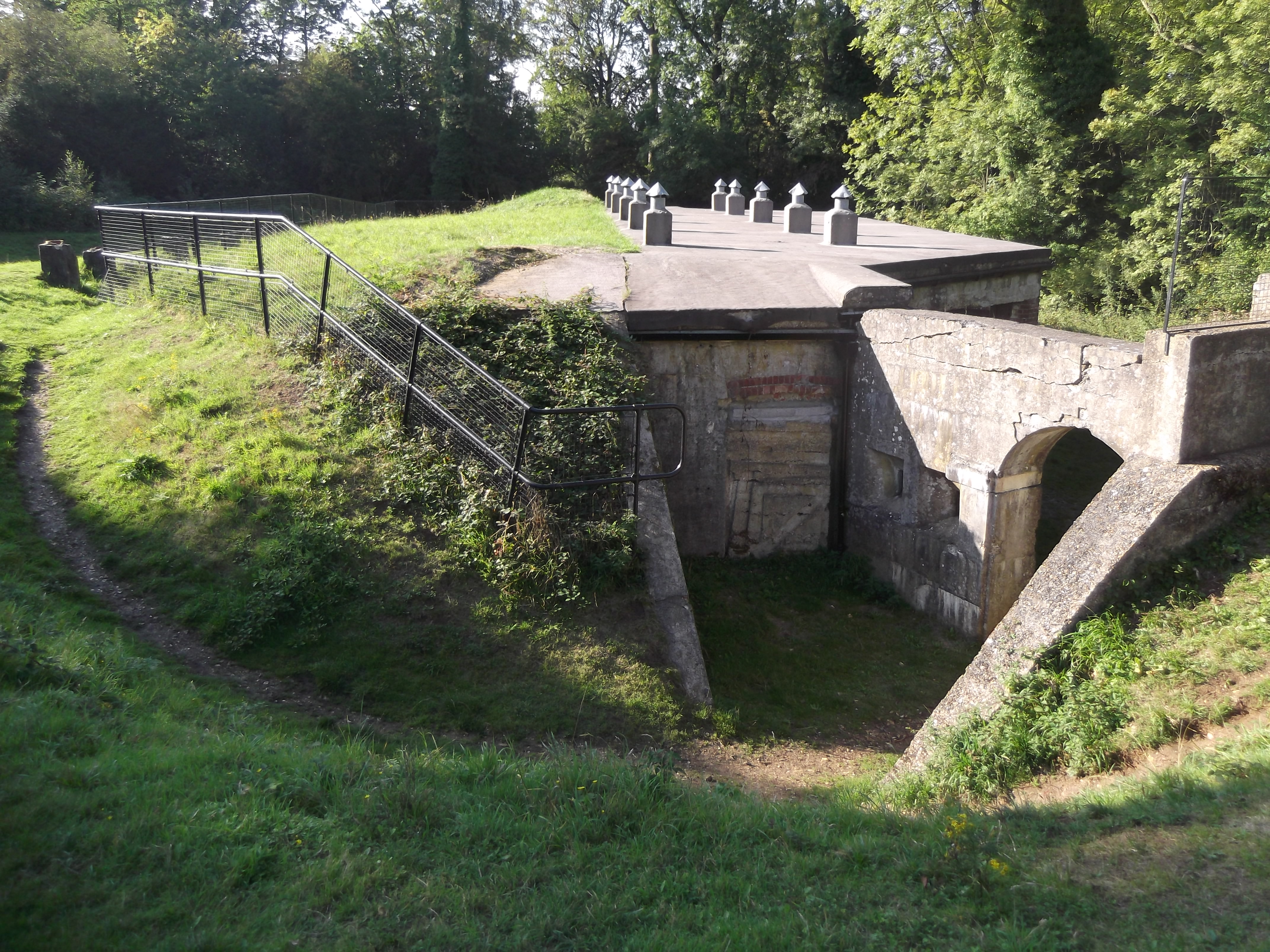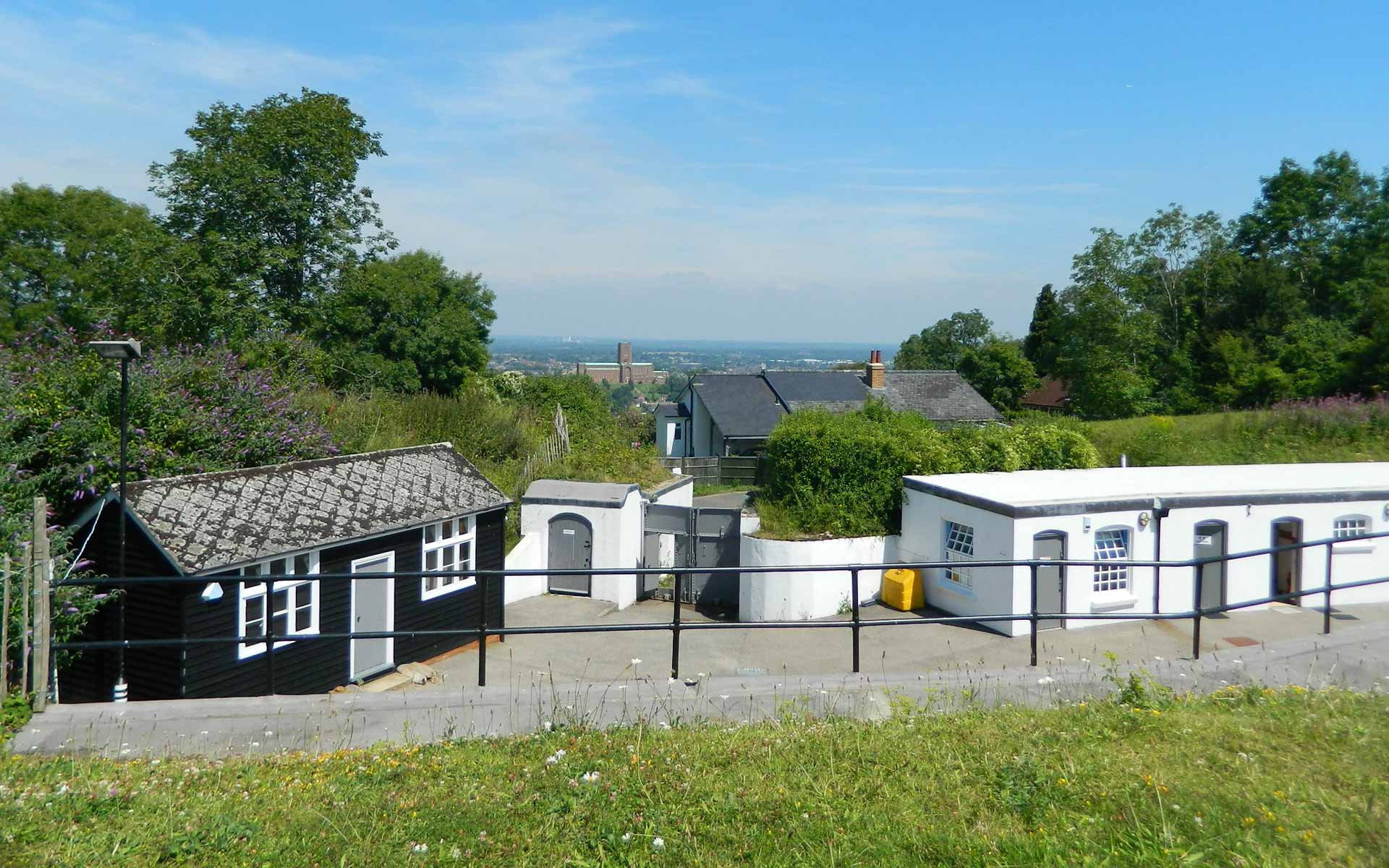London Defence Positions on:
[Wikipedia]
[Google]
[Amazon]

 The London Defence Positions were a late 19th century scheme of earthwork
The London Defence Positions were a late 19th century scheme of earthwork
 The London Mobilisation Centres were built along a 70-mile (113-kilometre) stretch of the
The London Mobilisation Centres were built along a 70-mile (113-kilometre) stretch of the
 Reigate Fort has been owned by the
Reigate Fort has been owned by the National Trust - Reigate Fort
London Mobilisation Centres - Gazeteer
(includes map)
National Trust - Reigate Fort
Handbook for the London Defence Positions
{{coord, 51.2539, -0.2005, type:landmark_dim:113000_region:GB-SRY, display=title Fortifications of London Defence of London

fortification
A fortification is a military construction or building designed for the defense of territories in warfare, and is also used to establish rule in a region during peacetime. The term is derived from Latin ''fortis'' ("strong") and ''facere ...
s in the south-east of England
England is a country that is part of the United Kingdom. It shares land borders with Wales to its west and Scotland to its north. The Irish Sea lies northwest and the Celtic Sea to the southwest. It is separated from continental Europe ...
, designed to protect London
London is the capital and List of urban areas in the United Kingdom, largest city of England and the United Kingdom, with a population of just under 9 million. It stands on the River Thames in south-east England at the head of a estuary dow ...
from foreign invasion landing on the south coast. The positions were a carefully surveyed contingency plan for a line of entrenchments, which could be quickly excavated in a time of emergency. The line to be followed by these entrenchments was supported by thirteen permanent small polygonal forts or redoubt
A redoubt (historically redout) is a fort or fort system usually consisting of an enclosed defensive emplacement outside a larger fort, usually relying on earthworks, although some are constructed of stone or brick. It is meant to protect soldi ...
s called London Mobilisation Centres, which were equipped with all the stores and ammunition that would be needed by the troops tasked with digging and manning the positions.
Origins
The 1859Royal Commission on the Defence of the United Kingdom
The Royal Commission on the Defence of the United Kingdom was a committee formed in 1859 to enquire into the ability of the United Kingdom to defend itself against an attempted invasion by a foreign power, and to advise the British Government on ...
report on Britain's defences believed that London was practically undefendable; they proposed a fort at Shooters Hill to defend the Royal Arsenal
The Royal Arsenal, Woolwich is an establishment on the south bank of the River Thames in Woolwich in south-east London, England, that was used for the manufacture of armaments and ammunition, proofing, and explosives research for the Britis ...
at Woolwich
Woolwich () is a district in southeast London, England, within the Royal Borough of Greenwich.
The district's location on the River Thames led to its status as an important naval, military and industrial area; a role that was maintained thr ...
, but it was never acted upon. Following a number of proposals by senior military figures, an 1888 memorandum written by Colonel John Charles Ardagh envisaged a scheme of simple earthworks for infantry
Infantry is a military specialization which engages in ground combat on foot. Infantry generally consists of light infantry, mountain infantry, motorized infantry & mechanized infantry, airborne infantry, air assault infantry, and mar ...
and moveable armaments, intended to be dug and manned in an emergency by the Volunteer Force, the line being supported by permanent works, the London Mobilisation Centres, at 5 mile (8 km) intervals, which acted as stores and magazine
A magazine is a periodical publication, generally published on a regular schedule (often weekly or monthly), containing a variety of content. They are generally financed by advertising, purchase price, prepaid subscriptions, or by a combinatio ...
s. The London Defence Scheme was announced in Parliament in March 1889 by the Secretary of State for War
The Secretary of State for War, commonly called War Secretary, was a secretary of state in the Government of the United Kingdom, which existed from 1794 to 1801 and from 1854 to 1964. The Secretary of State for War headed the War Office and ...
, Edward Stanhope
Edward Stanhope PC (24 September 1840 – 21 December 1893) was a British Conservative Party politician who was Secretary of State for War from 1887 to 1892.
Background and education
Born in London, Stanhope was the second son of Philip Stan ...
, by which time the 13 sites for the Mobilisation Centres had already been purchased at a cost of £25,000.
Locations
 The London Mobilisation Centres were built along a 70-mile (113-kilometre) stretch of the
The London Mobilisation Centres were built along a 70-mile (113-kilometre) stretch of the North Downs
The North Downs are a ridge of chalk hills in south east England that stretch from Farnham in Surrey to the White Cliffs of Dover in Kent. Much of the North Downs comprises two Areas of Outstanding Natural Beauty (AONBs): the Surrey Hills ...
from Guildford
Guildford ()
is a town in west Surrey, around southwest of central London. As of the 2011 census, the town has a population of about 77,000 and is the seat of the wider Borough of Guildford, which had around inhabitants in . The name "Guildf ...
to the Darenth valley and across the River Thames
The River Thames ( ), known alternatively in parts as the The Isis, River Isis, is a river that flows through southern England including London. At , it is the longest river entirely in England and the Longest rivers of the United Kingdom, se ...
in Essex
Essex () is a Ceremonial counties of England, county in the East of England. One of the home counties, it borders Suffolk and Cambridgeshire to the north, the North Sea to the east, Hertfordshire to the west, Kent across the estuary of the Riv ...
. Thirteen sites were chosen, at Pewley Hill
Pewley Hill is a hill, and a street so named, near Guildford in England. It links to the open space at Pewley Down and was used as the site of a semaphore station and a defensive fort in the nineteenth century. In the late 19th and early 20th ce ...
, Henley Grove, Denbies, Box Hill, Betchworth, Reigate, East Merstham, Fosterdown, Woldingham, Betsom's Hill
Betsom's Hill is a hill on the North Downs, and the highest point in the county of Kent at . Situated between Westerham and Tatsfield, at the western edge of the county, it lies close to where the A233 crosses the Downs en route to Biggin Hill. ...
, Halstead, Farningham and (to the north east of London) North Weald
North Weald Bassett or simply North Weald is a village and civil parish in the Epping Forest district of Essex, England. The village is within the North Weald Ridges and Valleys landscape area.
A market is held every Saturday and Bank Holiday Mo ...
. The design of each site varied, but they were never very elaborate, just a magazine and storehouses for the mobilisation of troops, with limited defences. The intention was that the centres would, in addition to holding ammunition and other supplies, act as strong points in an almost continuous line of field fortifications. The trench lines joining the Defence Positions could be rapidly excavated on the outbreak of war. Related stores were set up at Tilbury
Tilbury is a port town in the borough of Thurrock, Essex, England. The present town was established as separate settlement in the late 19th century, on land that was mainly part of Chadwell St Mary. It contains a 16th century fort and an anc ...
, Warley and possibly Caterham. They were quickly viewed as obsolete, and all were sold off in 1907, with the exception of Fort Halstead, now used by DSTL
The Defence Science and Technology Laboratory (Dstl) is an executive agency of the Ministry of Defence of the United Kingdom. Its stated purpose is "to maximise the impact of science and technology for the defence and security of the UK". The ...
.
During World War I
World War I (28 July 1914 11 November 1918), often abbreviated as WWI, was List of wars and anthropogenic disasters by death toll, one of the deadliest global conflicts in history. Belligerents included much of Europe, the Russian Empire, ...
, part of the London Defence Positions scheme was resurrected to form a stop line of trenches, in case of a German invasion. North of the Thames, the line was continued to the River Lea
The River Lea ( ) is in South East England. It originates in Bedfordshire, in the Chiltern Hills, and flows southeast through Hertfordshire, along the Essex border and into Greater London, to meet the River Thames at Bow Creek. It is one of ...
at Broxbourne rather than stopping at Epping. South of the Thames, it was continued to Halling, via Wrotham
Wrotham ( ) is a village on the Pilgrims' Way in Kent, England, at the foot of the North Downs. It is north of Borough Green and approximately east of Sevenoaks. It is between the M20 and M26 motorways.
History
The name first occurs as ...
, linking to the Chatham defences. At the western end the line was stopped short at Buckland Hill, just beyond Reigate Fort.
At Guildford, houses have been built on the Pewley Hill site, but Henley Fort (aka Henley Grove) has been well preserved as a youth education centre. It could be seen on a Heritage Open Day.
Reigate Fort
 Reigate Fort has been owned by the
Reigate Fort has been owned by the National Trust
The National Trust, formally the National Trust for Places of Historic Interest or Natural Beauty, is a charity and membership organisation for heritage conservation in England, Wales and Northern Ireland. In Scotland, there is a separate and ...
since 1932. The structure was falling into disrepair, but grant money from the Biffaward, the Heritage Lottery grant
The National Lottery Heritage Fund, formerly the Heritage Lottery Fund (HLF), distributes a share of National Lottery funding, supporting a wide range of heritage projects across the United Kingdom.
History
The fund's predecessor bodies were ...
and the National Trust itself has enabled the Trust to restore the building. The first phase of the repairs was carried out in 2000 and was funded by a grant of £104,000 from the Biffaward. A second phase cost £174,000.
The fort opened to the public free of charge in 2007, though restoration work is ongoing. Information boards have been installed to tell visitors about the buildings. A teacher's pack is available and educational visits can be arranged.See also
* Fortifications of London * Outer London Defence Ring - the idea revived inWorld War II
World War II or the Second World War, often abbreviated as WWII or WW2, was a world war that lasted from 1939 to 1945. It involved the World War II by country, vast majority of the world's countries—including all of the great power ...
References
External links
London Mobilisation Centres - Gazeteer
(includes map)
National Trust - Reigate Fort
Handbook for the London Defence Positions
{{coord, 51.2539, -0.2005, type:landmark_dim:113000_region:GB-SRY, display=title Fortifications of London Defence of London